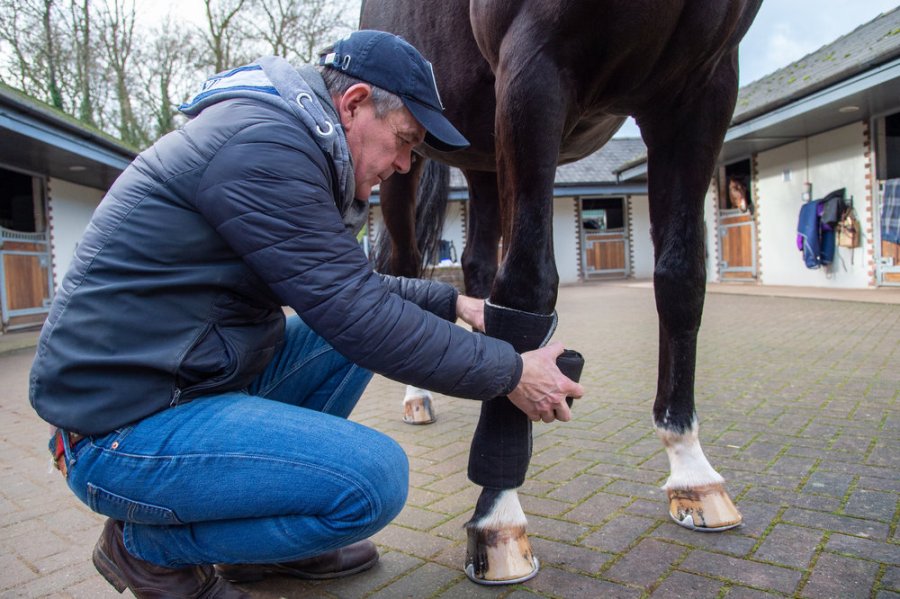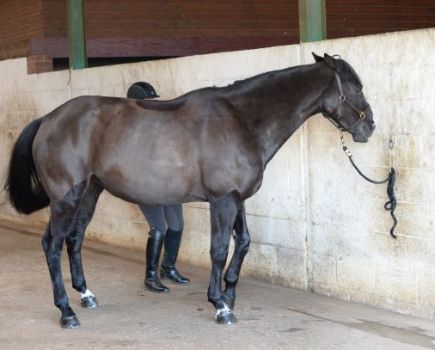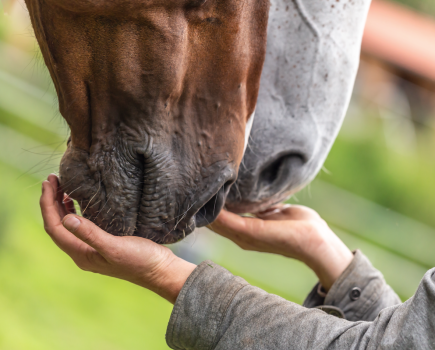The main function of stable bandages is to provide protection, support and warmth to your horse’s tendons and ligaments.
They can also be used to help with horses whose legs ‘fill up’ (edema), and to cover the leg after applying a wound dressing, poultice or topical application (cream).
Supergroom Alan Davies talks through how to apply the perfect bandage.
1. Place the starting edge of the wrap at the inside front of the cannon bone and unroll the wrap around the leg, ensuring as you go that the fabric and padding remains smooth, flat and wrinkle-free.
2. Wrap the bandage around the leg once to keep the end in place.
3. Continue to wrap the bandage down the leg in a spiral pattern, overlaying the previous wrap by half.
4. Try to maintain consistent tension on the bandage as you wrap and keep checking that the layers underneath are smooth and flat.
5. End the bandage at the outside front of the leg just below the knee or hock, leaving an inch of wrap showing above the bandage, and fasten the Velcro. Feel over and around the bandage for any lumps, ensuring it is smooth and flat all over.
6. Insert two fingers under the padding behind the knee to make sure there isn’t any pressure on the joint.
TOP TIPS
- Ensure legs are clean and dry to prevent rubbing and sores developing.
- Apply the correct tension – the bandage should be tight enough to stay in place but not so tight as to restrict blood flow.
- Wrap bandages from front to back, outside to inside (counter-clockwise on left legs, clockwise on right). This ensures tension from the bandage is applied to the front of the leg, rather than the delicate tendons at the back of the leg.
- Always wrap legs in pairs, such as both front legs or both hindlegs.
Don’t miss the latest issue of Your Horse Magazine, jam-packed with training and veterinary advice, horse-care tips and the latest equestrian products available on shop shelves, on sale now.









